How to Keep Your Pets Safe During Natural Disasters
Natural disasters can strike without warning, leaving not just humans but our beloved pets vulnerable to chaos and danger. As pet owners, it’s our responsibility to ensure that our furry friends are safe and secure during these unpredictable events. Have you ever thought about what would happen to your pet if a hurricane, flood, or wildfire hit your area? It’s a scary thought, but with the right preparation, you can significantly reduce the risks. This article explores essential strategies and tips to ensure the safety and well-being of your pets during natural disasters, including preparation, evacuation, and recovery plans.
Recognizing the types of natural disasters that can affect your area is crucial. From floods and earthquakes to hurricanes and wildfires, each type of disaster poses unique challenges for pet owners. For instance, during a flood, your pet may be at risk of drowning or being swept away, while wildfires can lead to smoke inhalation or even burns. Understanding these risks helps you prepare effectively. Have you checked what natural disasters are most common in your region? It’s essential to be aware of your surroundings and the potential threats they carry.
An emergency plan is vital for pet safety. It’s not just about having a plan for yourself; your pets need one too! Start by developing a comprehensive plan that includes evacuation routes, safe zones, and communication strategies for your pets. Imagine having to leave your home in a hurry; would you know exactly where to go and how to get there with your pets? This is why preparation is key. Make sure your plan includes:
- Designated evacuation routes
- Safe zones where pets are allowed
- Communication methods to locate your pets if they get lost
Finding safe locations for your pets during a disaster is essential. Not all shelters accept pets, so it’s important to research pet-friendly shelters and safe havens in your community before disaster strikes. You might feel overwhelmed thinking about where to go, but having a list of nearby pet-friendly shelters can ease your mind. Check with local animal shelters or community centers to find out what options are available. Consider creating a map of these locations and keep it handy!
Discovering local shelters and resources can aid in emergency situations. Many organizations provide assistance during disasters, and knowing where to find them can make a significant difference. Here are some resources you might want to look into:
| Resource | Contact Information | Services Offered |
|---|---|---|
| Local Animal Shelter | (555) 123-4567 | Temporary shelter for pets |
| Red Cross | (555) 987-6543 | Emergency sheltering services |
| ASPCA | (555) 555-5555 | Disaster response team |
Keeping a list of emergency contacts is crucial. In the chaos of a disaster, it’s easy to forget important numbers. Make sure you have vet contacts, pet sitters, and emergency services readily available. You can create a small card to keep in your wallet or even save these numbers in your phone for quick access. Remember, you’re not just looking out for yourself; your pets depend on you!
An emergency kit should include essential supplies for your pets. Think of it as a survival backpack for your furry friend. What should you pack? Here’s a quick checklist:
- Food and water
- Medications and medical records
- Comfort items like toys or blankets
- Leashes, carriers, and harnesses
Don’t forget to rotate the food and water every few months to ensure they remain fresh. It’s like having a mini supply chain for your pet’s needs!
Evacuating safely with pets requires careful planning. It’s not just about grabbing your pet and running out the door; there are several considerations to keep in mind. First, ensure your pets are comfortable in their carriers or harnesses. You don’t want a panicked pet causing chaos while you’re trying to evacuate. Have you thought about how to transport your pets? It’s crucial to have a plan in place before the need arises.
Transporting pets during an evacuation can be challenging. Whether you’re using a car or public transport, it’s important to secure your pets properly. Use carriers that are well-ventilated and spacious enough for your pet to move around comfortably. If you’re traveling by car, make sure your pet is secured with a harness or in a crate. Think of it like strapping in a child for safety; it’s all about keeping them secure during the ride.
Understanding your pet's behavior during stressful situations is key. Pets can sense our anxiety, and during evacuations, they may become frightened or agitated. It’s important to remain calm and reassure them. Have you noticed how a soothing voice can calm a nervous child? The same applies to our pets. Use treats and familiar toys to help ease their stress during these chaotic times.
After a disaster, pets may need special attention. Just like humans, they can experience trauma and anxiety. It’s essential to provide them with a stable environment as they adjust back to normalcy. Have you thought about how to help your pet recover emotionally? Re-establishing routines can be incredibly beneficial. This means regular feeding times, walks, and playtime to help them feel secure again.
Conducting health and safety checks post-disaster is essential. After a traumatic event, your pet may be at risk for injuries or illnesses. Look for signs of stress or physical issues, such as limping or unusual behavior. If you notice anything concerning, don’t hesitate to contact your veterinarian. It’s like giving your pet a thorough check-up after a rough day; they deserve it!
Pets may experience anxiety and trauma after a disaster. Providing emotional support is crucial in helping them recover. Spend quality time with your pets, engage in their favorite activities, and offer plenty of cuddles. Just like humans, pets need love and reassurance to heal. Remember, you’re their safe haven, and they rely on you to help them through tough times.
Q: What should I include in my pet's emergency kit?
A: Your pet's emergency kit should include food, water, medications, a first-aid kit, comfort items, and identification tags.
Q: How can I find pet-friendly shelters during a disaster?
A: Research local shelters and organizations before a disaster strikes. Keep a list handy for quick access during emergencies.
Q: What should I do if my pet gets lost during an evacuation?
A: Keep a recent photo of your pet and ensure they have proper identification. Contact local shelters and use social media to spread the word.
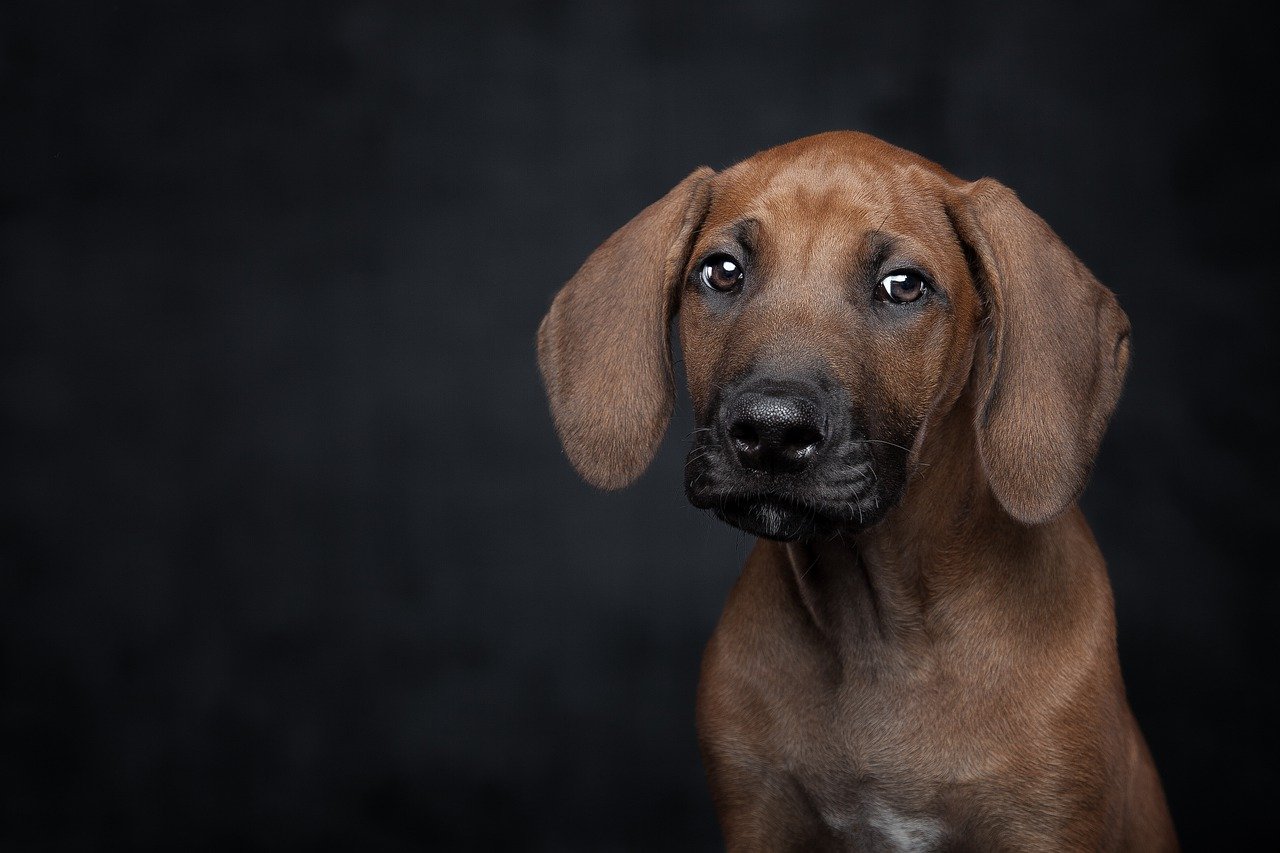
Understanding the Risks
When it comes to keeping our beloved pets safe, understanding the potential risks posed by natural disasters is the first step. Different regions face different types of disasters, and knowing what could happen in your area can make all the difference in ensuring your furry friends are protected. From hurricanes to wildfires, each disaster type comes with its own set of challenges that can significantly impact your pets.
For instance, if you live in a coastal region, hurricanes and flooding might be your primary concern. These disasters often lead to sudden evacuations and can leave pets disoriented and scared. On the other hand, those living in areas prone to wildfires need to be cautious of smoke inhalation and the risk of being trapped. Understanding these risks is not just about knowing the type of disaster; it’s also about recognizing how your pets might react to these situations.
Common natural disasters that can affect pets include:
- Earthquakes: Sudden and unpredictable, earthquakes can cause panic and confusion for pets, leading them to hide or escape.
- Floods: Rising waters can trap pets and make evacuation difficult, while also posing health risks from contaminated water.
- Hurricanes: High winds and flooding can lead to evacuations, and pets may become lost or separated from their owners.
- Wildfires: Smoke and flames can pose immediate threats, and pets may suffer from respiratory issues or get lost in the chaos.
Each of these disasters can have a profound impact on your pets' well-being. For example, during an earthquake, pets may feel the tremors and become anxious or frightened. In the wake of a flood, they might be exposed to dangerous debris or contaminated water, leading to health issues. By understanding these risks, pet owners can take proactive measures to mitigate the dangers and ensure their pets are as safe as possible.
Moreover, it’s essential to keep in mind that pets often rely on us to interpret their environment. They can sense our anxiety and stress, which can exacerbate their own fears. Therefore, being prepared not only involves having a plan in place but also being aware of how these disasters can affect your pet’s mental and emotional state. By staying informed and prepared, we can create a secure environment for our pets, even in the face of nature’s unpredictability.

Creating an Emergency Plan
Creating an emergency plan for your pets is not just a good idea—it's a necessity. When disaster strikes, having a well-thought-out plan can make all the difference in ensuring the safety and well-being of your furry family members. Start by involving every member of your household in the planning process. After all, caring for pets is a team effort! Discuss the types of disasters that could occur in your area—be it floods, hurricanes, or wildfires—and brainstorm how each family member can contribute to the plan.
First and foremost, you need to establish clear evacuation routes. Think of these routes as the lifelines that will guide you to safety. Ensure everyone knows the quickest way to leave your home and where to head afterward. It’s also wise to have a backup plan in case your primary route is blocked. Consider using a map or a simple table to outline these routes. For example:
| Disaster Type | Main Route | Alternate Route |
|---|---|---|
| Flood | Main St. to Riverside Ave. | Maple St. to Oak St. |
| Hurricane | Highway 10 North | Backroads via Elm St. |
Next, identify safe zones where you can take your pets during an emergency. These can be pet-friendly shelters, hotels, or even the homes of friends or family. It's crucial to call ahead and confirm that these places will accept pets. Make a list of these locations and keep it in an easily accessible spot. You never know when you might need it!
Communication is another key component of your emergency plan. Make sure you have a way to communicate with your pets if you become separated. This could mean having a secure collar with an ID tag that includes your contact information. Microchipping your pet is also a fantastic option, as it provides a permanent form of identification. Remember, in the chaos of a disaster, even the most well-behaved pets can become frightened and run off.
Lastly, don’t forget to include your pets in your emergency contacts. Just like you have a list of family and friends to reach out to in case of an emergency, include your veterinarian, pet sitters, and local animal shelters. Having these contacts readily available can save precious time when every second counts. You might even consider creating a small emergency card that contains all this information, keeping it in your wallet or purse.
In summary, crafting a comprehensive emergency plan for your pets involves preparation, communication, and a proactive approach. By taking these steps, you not only ensure your pets' safety but also give yourself peace of mind. Remember, a little planning goes a long way in keeping your furry friends safe during natural disasters!

Identifying Safe Locations
When disaster strikes, knowing where to take your pets can be one of the most challenging aspects of your emergency plan. It’s like trying to find a needle in a haystack, especially when panic sets in. But fear not! With a little preparation and research, you can identify safe locations that will ensure your furry friends are protected during a crisis.
First and foremost, it’s essential to familiarize yourself with local shelters and resources that accommodate pets. Many communities have designated pet-friendly shelters that can provide a safe haven during emergencies. To find these locations, you can start by visiting your local government’s website or contacting your local animal control agency. They often have lists of shelters that welcome pets and can guide you on what to expect during an emergency evacuation.
Additionally, consider reaching out to local animal rescue organizations and veterinary clinics. These establishments can offer invaluable information on safe locations and may even have resources to help you during a disaster. Sometimes, they organize temporary shelters or can recommend nearby facilities that are prepared for such emergencies. It’s like having a safety net; knowing that there are people and places ready to help can significantly ease your worries.
Another critical aspect of identifying safe locations is to have a plan for different types of disasters. For instance, if you live in an area prone to flooding, you’ll want to ensure that the shelter you choose is on higher ground. Conversely, if wildfires are a concern, you should look for locations that are far away from potential fire zones. Understanding the specific risks in your area allows you to make informed decisions about where to go when disaster strikes.
Don’t forget to consider your pet’s specific needs when identifying safe locations. For example, if you have a pet that requires medication or has special dietary needs, ensure that the shelter can accommodate those requirements. It’s essential to communicate your pet’s needs ahead of time, so the staff is prepared to help. This proactive approach can make a world of difference in keeping your pet comfortable and safe.
Lastly, it’s a good idea to have a backup plan. Sometimes, the first shelter you reach may be full, or it might not be as pet-friendly as you hoped. Having a list of alternative locations can save you time and stress in the heat of the moment. You can create a simple table to keep track of these locations, including their contact information, address, and any specific requirements they may have for pets.
| Location Name | Address | Contact Number | Pet-Friendly? |
|---|---|---|---|
| City Shelter | 123 Safe St. | (555) 123-4567 | Yes |
| Local Animal Rescue | 456 Help Ave. | (555) 987-6543 | Yes |
| Community Center | 789 Shelter Rd. | (555) 654-3210 | No |
By taking the time to identify safe locations for your pets, you’re not just preparing for the worst; you’re ensuring that your beloved companions have a safe place to go when it matters most. Remember, a little preparation goes a long way in keeping your pets safe during natural disasters. So, gather your information, make those calls, and rest easy knowing you’re ready for whatever comes your way!
Local Shelters and Resources
When disaster strikes, knowing where to turn for help can make all the difference for your furry friends. Local shelters and resources play a crucial role in providing safe havens for pets during emergencies. Many communities have designated pet-friendly shelters that specifically cater to the needs of animals during disasters. It's essential to research these facilities ahead of time so that you’re not scrambling to find a safe place when the situation arises. Think of local shelters as the lifeboats in a stormy sea; you want to know where they are before you need them!
In addition to shelters, various organizations can assist during natural disasters. For instance, local animal control agencies often have resources and information on available shelters and services. Nonprofit organizations, such as the Humane Society or ASPCA, frequently set up emergency response teams during disasters. They can provide food, medical care, and even temporary housing for pets. It's a good idea to keep a list of these organizations handy, along with their contact information, so you can reach out quickly when needed.
Here are a few types of local resources you should consider:
- Pet-Friendly Shelters: These are designated facilities that allow pets to stay with their owners during emergencies.
- Veterinary Clinics: Many clinics offer emergency services and can provide care for pets who may be injured or require medication.
- Community Centers: Some community centers may serve as temporary shelters or distribution points for pet supplies.
Make sure to check if your local shelters have specific requirements, such as vaccination records or pet carriers. Knowing these details in advance can save you time and stress during an evacuation. Additionally, consider reaching out to your neighbors or local pet groups; they often have valuable information about resources available in your area. The more prepared you are, the easier it will be to ensure your pets are safe and sound when disaster strikes.
Emergency Contacts
When it comes to keeping your pets safe during a natural disaster, having a solid list of is absolutely essential. Imagine being in the midst of chaos, your heart racing, and your furry friend looking up at you with wide eyes. The last thing you want is to scramble for phone numbers or search online for help. Instead, you should have a well-organized list readily available, ensuring that you can act swiftly when every second counts.
Start by compiling a list of veterinarians in your area, including their contact numbers and addresses. This information is crucial because you may need to visit them for an emergency check-up or if your pet requires medication. Additionally, consider including pet sitters or boarding facilities that you trust. In the event of an evacuation, knowing where to take your pets can alleviate some of the stress.
Don't forget to include local animal shelters and rescue organizations as part of your emergency contacts. These organizations can be invaluable resources during disasters, offering shelter and support for pets and their owners. It's also wise to have the contact information for local emergency services, such as fire departments and police, who may assist in rescue efforts or provide information about pet-friendly evacuation routes.
To make this process easier, consider creating a simple table to organize your contacts. Here’s a suggested format:
| Contact Type | Name | Phone Number | Address |
|---|---|---|---|
| Veterinarian | Dr. Smith's Animal Clinic | (123) 456-7890 | 123 Pet Lane, Pet City |
| Pet Sitter | Jane Doe | (098) 765-4321 | 456 Animal Ave, Pet City |
| Local Shelter | Pet Haven Shelter | (555) 123-4567 | 789 Shelter Rd, Pet City |
| Emergency Services | City Fire Department | (111) 222-3333 | 101 Fire Station, Pet City |
Keep this list in a safe but accessible place, like on your refrigerator or in your emergency kit. You might also want to save it on your phone or in a cloud-based service, so you can access it from anywhere. Remember, the idea is to minimize panic and maximize preparedness. Being able to quickly reach the right people can make all the difference when it comes to your pet's safety.
In conclusion, having a comprehensive list of emergency contacts is not just about being organized; it's about being proactive. By taking the time to gather this information, you're ensuring that when disaster strikes, you and your pets will be ready to face it together. So, grab a pen, start jotting down those important numbers, and give yourself peace of mind knowing you’re prepared for anything that comes your way.
Q: What should I include in my pet emergency kit?
A: Your pet emergency kit should include food, water, medications, a first aid kit, leashes, carriers, and comfort items like toys or blankets.
Q: How can I help my pet cope during a disaster?
A: Providing a calm environment, familiar items, and maintaining a routine can help reduce your pet's anxiety during stressful situations.
Q: What should I do if I can't evacuate with my pet?
A: If you cannot take your pet with you, try to find a safe place for them, such as a trusted friend or family member's home, or contact local shelters for assistance.
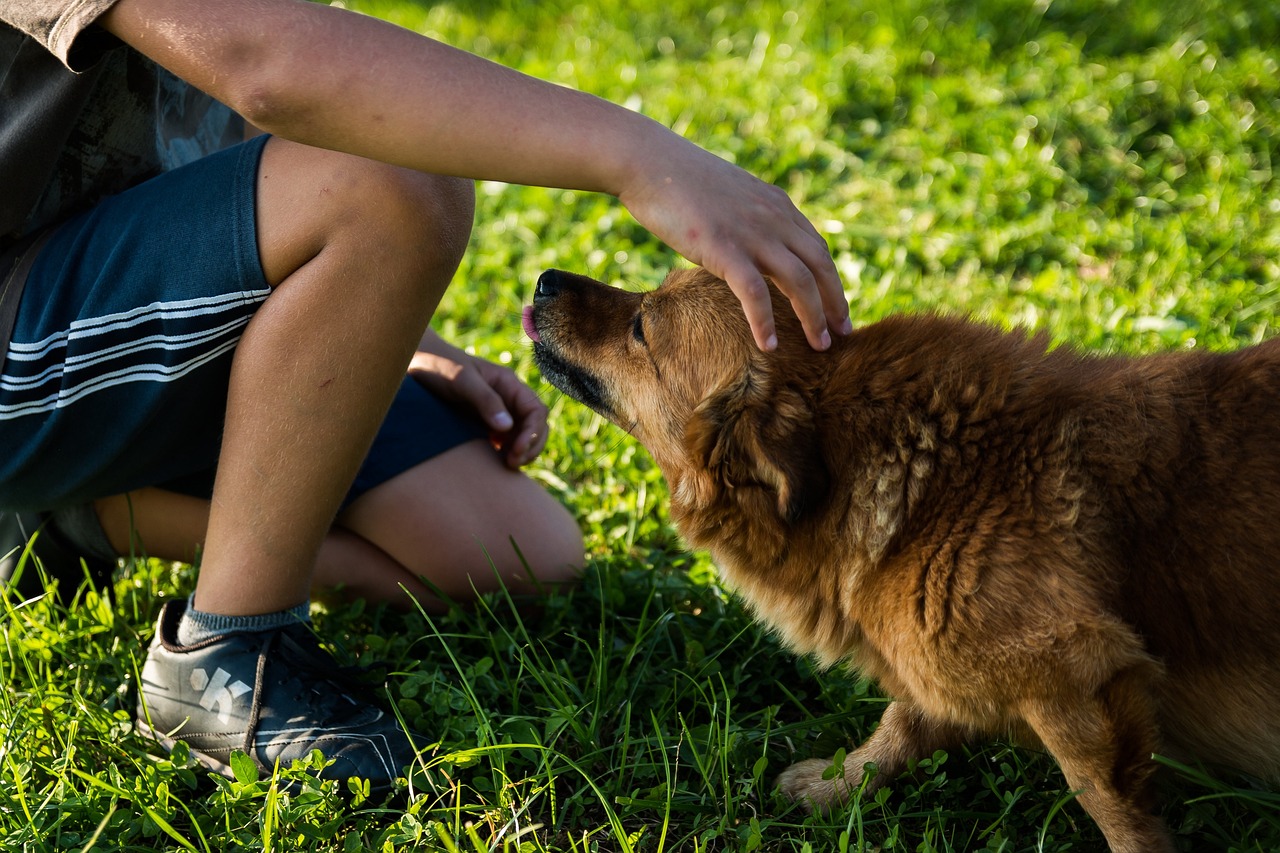
Preparing an Emergency Kit
When it comes to ensuring the safety and well-being of your furry friends during a natural disaster, having an emergency kit prepared is absolutely essential. Think of it as a lifeline that can help you navigate through chaotic times. Just like you would pack your essentials, your pets need their own set of supplies to keep them comfortable and safe. So, what should you include in this all-important kit?
First and foremost, it's vital to have enough food and water for your pets. Ideally, you should pack at least a week's worth of food, along with a portable water bowl and sufficient water to keep them hydrated. Remember, just like us, our pets can get stressed during emergencies, and having their favorite food can provide them with a sense of normalcy.
Next on the list is medications. If your pet requires any regular medications, make sure to pack an adequate supply. It’s also a smart idea to have a copy of their medical records, including vaccination history, in case you need to visit a vet during or after the disaster. This can save you a lot of time and stress!
Don’t forget about comfort items! Pets can feel anxious during emergencies, so including their favorite toys or blankets can help soothe them. Think of it like packing a familiar pillow for a child going to sleep in an unfamiliar place. It can make all the difference in helping them feel secure.
Additionally, you should pack a first aid kit specifically designed for pets. This kit should include items like antiseptic wipes, bandages, and any other supplies you think might be necessary. Just like humans, pets can get hurt or sick, and being prepared can help you respond quickly.
Another crucial component of your emergency kit is a leash and carrier. In the event of an evacuation, having a secure way to transport your pet is vital. Make sure the carrier is well-ventilated and large enough for your pet to move around comfortably. This is especially important if you have a larger dog; a sturdy leash is essential for keeping them close and secure.
Lastly, don’t forget to include a list of emergency contacts in your kit. This should include your veterinarian, local animal shelters, and any pet sitters you might use. Having this information readily available can save you precious time in a crisis.
In summary, preparing an emergency kit for your pets isn’t just about gathering supplies; it’s about creating a sense of security for them during uncertain times. By taking the time to gather these essential items, you’re not only ensuring their physical needs are met but also providing them with emotional comfort. Just like a well-packed suitcase for a trip, a well-prepared emergency kit can help you and your pets face any disaster head-on.

Evacuating with Pets
When disaster strikes, the last thing you want is to be unprepared, especially when it comes to your furry friends. requires more than just a quick grab-and-go; it demands careful planning and consideration. Imagine the panic of a sudden evacuation—your heart races, and your mind spins. But what about your pets? They rely on you to keep them safe. So, how do you ensure their safety during such a chaotic time?
First and foremost, create a pet evacuation plan that includes transportation methods, necessary supplies, and designated safe locations. Think about it: if you have to leave your home in a hurry, do you know where your pets will go? You need to be ready with a strategy. Start by identifying your vehicle's capacity and how many pets you can comfortably transport. If you're a proud pet parent of multiple animals, consider whether you need a larger vehicle or if you can coordinate with friends or family who can help.
As part of your evacuation plan, pack an emergency kit specifically for your pets. This kit should contain essential items such as:
- Food and water for at least a week
- Medications and medical records
- Leashes, harnesses, and carriers
- Comfort items like toys or blankets
- First aid supplies
Having these items ready to go can make a world of difference in an emergency situation.
Next, consider your pet's behavior during stressful situations. Just like humans, pets can experience anxiety and fear when faced with sudden changes. They may not understand why they're being hurried out of their home. To help manage their stress, keep them secure in their carriers or leashed while you transport them. Familiar items, such as their favorite blanket or toy, can provide comfort and reassurance. It's crucial to stay calm yourself; pets can pick up on your emotions. If you’re anxious, they likely will be too.
When it comes to transportation, ensure that your pets are safely secured in your vehicle. If you're using a carrier, make sure it’s well-ventilated and large enough for your pet to stand, turn around, and lie down comfortably. For larger dogs, a secure harness is essential. Remember, a loose pet in a moving vehicle can be a serious distraction and a safety hazard. Additionally, plan for frequent stops to give your pets a chance to stretch their legs and relieve themselves. If you’re traveling long distances, research pet-friendly hotels or shelters along your route.
Finally, keep in mind that evacuation is not just about physically moving your pets; it’s also about maintaining a sense of normalcy for them. Try to stick to their regular feeding and walking schedule as much as possible. This routine can help reduce anxiety and make the transition smoother for both you and your pets. Remember, they rely on you for stability during these uncertain times.
Q: What should I do if I can't take my pet with me during an evacuation?
A: If you can't take your pet, look for a trusted friend or family member who can care for them until it's safe to return. Alternatively, find a local pet shelter that can accommodate your pet during the emergency.
Q: How can I prepare my pet for an evacuation?
A: Familiarize your pet with their carrier and take them on short car trips to help them adjust. Practice your evacuation plan with them so they know what to expect.
Q: Should I have my pet microchipped?
A: Yes! Microchipping provides a permanent form of identification that can help reunite you with your pet if you get separated during a disaster.
In conclusion, evacuating with your pets is a critical aspect of disaster preparedness. By planning ahead, packing the right supplies, and understanding your pets' needs, you can ensure their safety and comfort during a stressful time.
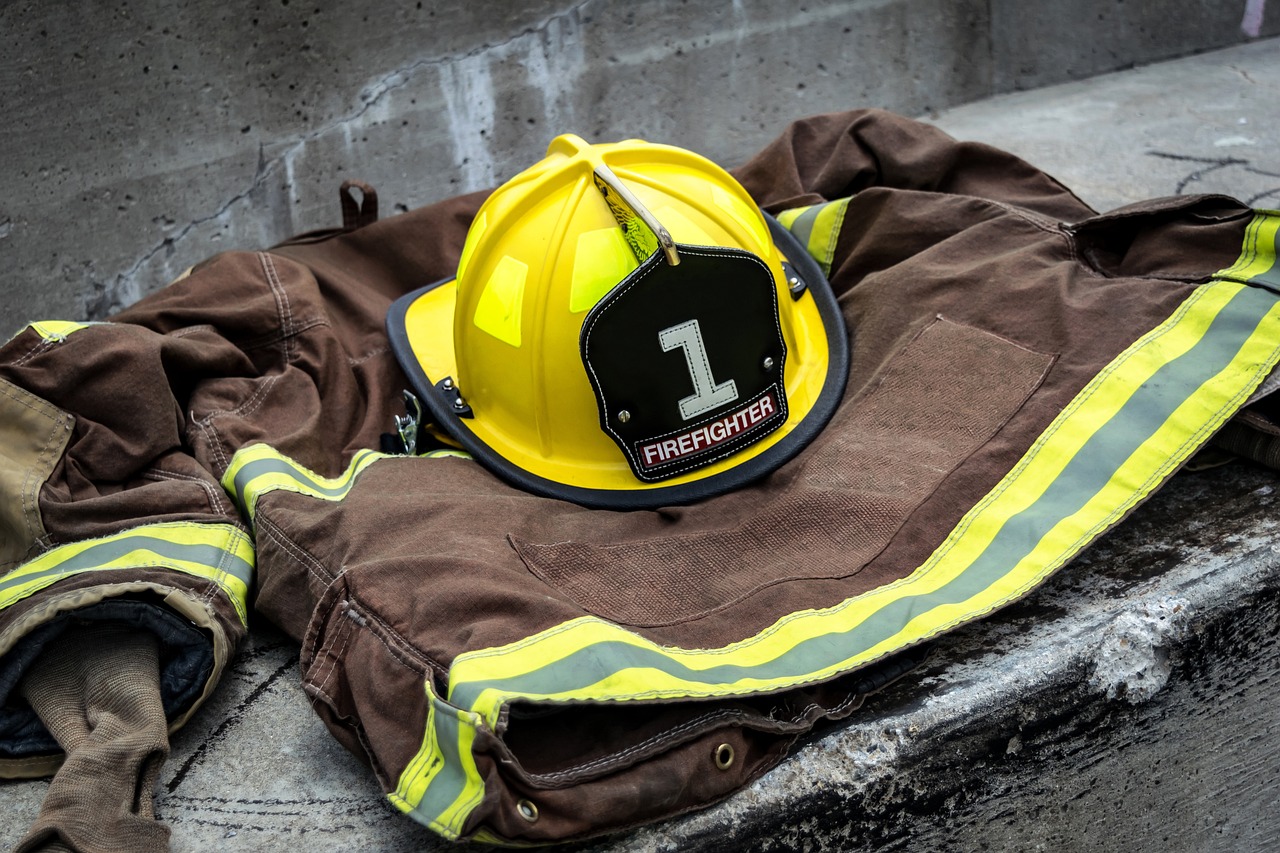
Transporting Your Pets
When it comes to evacuating with your pets, the process can feel overwhelming, but with the right strategies, you can ensure a smooth and safe journey. First and foremost, it's essential to have a proper vehicle setup. If you have a larger pet, consider using a sturdy pet carrier or a harness that secures them in place. This not only keeps your furry friend safe but also minimizes distractions while you're driving. Remember, a calm pet makes for a calm ride!
Before you even think about hitting the road, make sure your pet is familiar with their carrier or harness. Spend some time at home, allowing them to explore and get comfortable. This simple step can significantly reduce their stress levels during transport. Additionally, if you have multiple pets, it’s wise to transport them separately to avoid any potential conflicts in a confined space.
One of the key factors to consider is the temperature inside your vehicle. Pets can easily become overheated, especially during summer months. Always ensure that your car is well-ventilated, and never leave your pet alone in a parked vehicle, even for a short time. If you're traveling long distances, plan for regular breaks to let your pets stretch their legs, hydrate, and relieve themselves. These breaks are crucial not just for their physical needs but also for their mental well-being.
During the journey, keep your pet's comfort in mind. Bring along their favorite blanket or toy, as familiar scents can be incredibly soothing. Additionally, consider packing some treats or a small portion of their regular food to maintain their routine. You might also want to have a portable water bowl handy to keep them hydrated.
In the event of an emergency evacuation, having a pet-friendly travel kit ready can make all the difference. This kit should include essentials such as:
- Food and water
- Medications and medical records
- Leash, collar, and ID tags
- Comfort items (toys, blankets)
- First aid supplies
Lastly, be aware of your pet's behavior during transport. Some pets may become anxious or restless, while others might feel more secure. Keep an eye on them, and if you notice signs of distress, such as excessive barking or panting, try to soothe them with calming words or a gentle touch. If your pet is particularly anxious, consult your veterinarian beforehand about possible calming aids.
Ultimately, transporting your pets during an evacuation requires careful planning and a touch of creativity. By ensuring their comfort and safety, you can transform a potentially stressful situation into a manageable one, allowing you both to focus on what truly matters: each other's well-being.
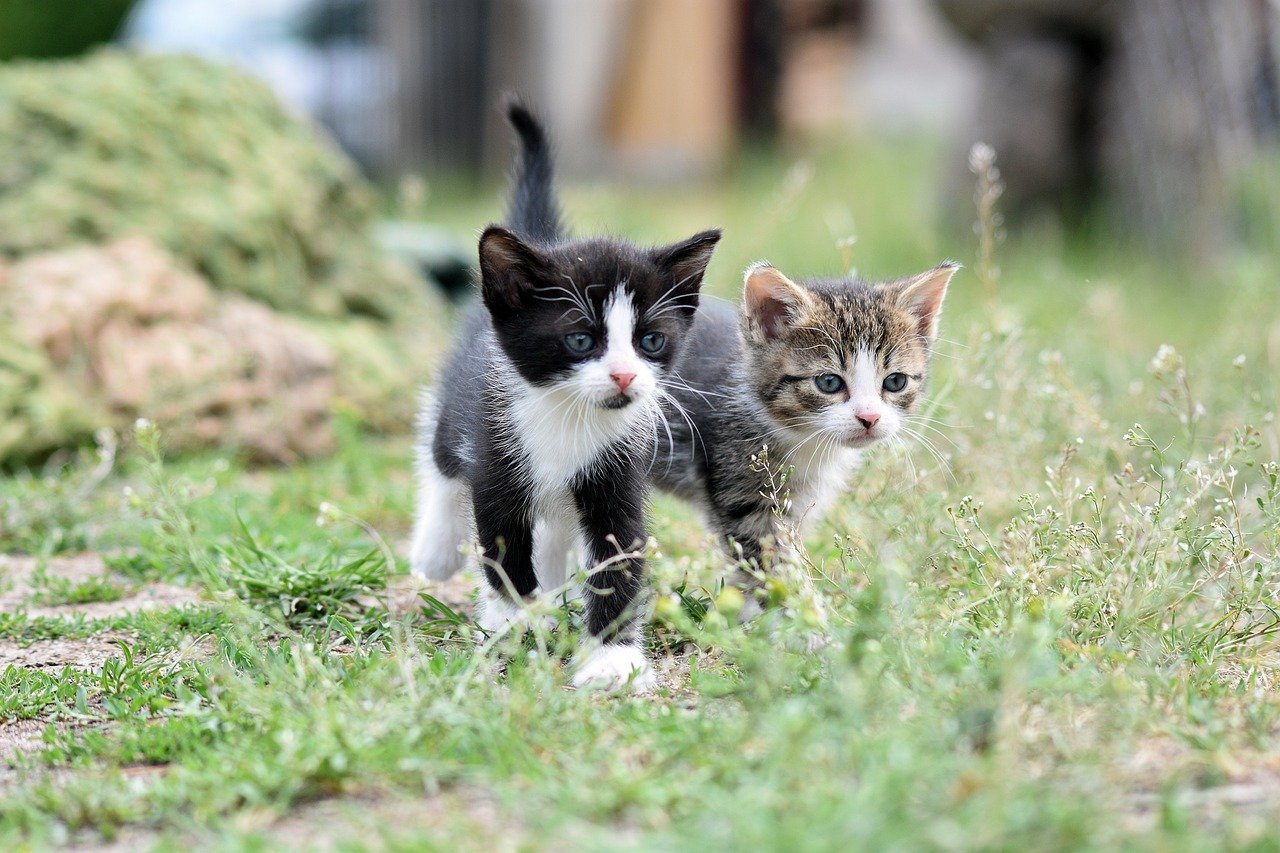
Behavioral Considerations
When it comes to evacuating with your beloved pets, understanding their behavioral responses during stressful situations is absolutely crucial. Just like humans, pets can experience a range of emotions, from anxiety to fear, and their reactions can vary significantly based on their individual personalities and past experiences. Imagine being in a chaotic environment, surrounded by loud noises and unfamiliar scents; this is how your pet might feel during a disaster. Therefore, being prepared to manage these reactions can make a world of difference.
During an evacuation, your pet may display behaviors such as excessive barking, hiding, or even aggression. These behaviors are often a response to fear and confusion. For instance, a normally friendly dog might become defensive if they feel threatened. Similarly, cats may seek refuge in tight spaces, making them difficult to locate. Understanding these tendencies can help you anticipate their needs and respond accordingly. It's essential to approach your pet with calmness and reassurance, as your demeanor can greatly influence their behavior.
Moreover, consider the following tips to help manage your pet's behavior during an evacuation:
- Stay Calm: Your pets can sense your anxiety. Maintaining a calm demeanor can help soothe them.
- Use Familiar Items: Bringing along their favorite blanket or toy can provide comfort.
- Practice Evacuations: Familiarize your pets with the evacuation process beforehand to reduce anxiety.
- Monitor Their Health: Keep an eye on their behavior for signs of stress, such as excessive panting or pacing.
Additionally, it’s wise to have a plan in place for different scenarios. For instance, if you have multiple pets, consider how you will manage them during the chaos. Some pets may require more attention and reassurance than others. Having a designated person responsible for each pet can help streamline the process and ensure that no one feels neglected. Just like a well-oiled machine, a coordinated effort can make all the difference in a high-stress situation.
Lastly, remember that post-evacuation, your pets may continue to display signs of anxiety or stress. It’s important to provide them with a safe space where they can retreat and feel secure. Gradually reintroducing them to their normal routine can help them adjust back to everyday life. Just as we need time to recover from traumatic experiences, so do our furry companions.
Q: How can I tell if my pet is stressed during a disaster?
A: Look for signs such as excessive barking, hiding, panting, or changes in eating habits. If your pet seems unusually clingy or aggressive, these may also be indicators of stress.
Q: What should I do if my pet refuses to enter their carrier during an evacuation?
A: Encourage your pet with treats and familiar items. You can also practice getting them into the carrier in a calm environment before a disaster strikes.
Q: Is it okay to sedate my pet during an evacuation?
A: Consult your veterinarian before using any sedatives. While some pets may benefit from them, others may react negatively, especially in stressful situations.

Post-Disaster Recovery
After a natural disaster, the recovery process is not just about rebuilding your home; it’s also about ensuring that your furry companions are safe and secure. Just like humans, pets can experience stress and trauma from such events. Therefore, it’s crucial to have a plan in place to help them recover emotionally and physically. Think of it as a gentle journey back to normalcy for both you and your pets.
The first step in post-disaster recovery is conducting a thorough health and safety check on your pets. This means looking for any signs of distress or injury. Pets may not always show their pain, so it’s essential to be vigilant. Look for symptoms such as:
- Changes in appetite
- Excessive barking or meowing
- Hiding or seeking solitude
- Physical injuries or signs of illness
If you notice any concerning signs, it’s a good idea to consult your veterinarian. They can provide a professional assessment and recommend any necessary treatments. Remember, just like us, pets can suffer from anxiety and stress, which can manifest in various ways.
Providing emotional support is another vital aspect of recovery. Your pets may feel confused or anxious after the chaos of a disaster. To help them cope, create a calming environment. This can include:
- Establishing a quiet, safe space where they can retreat
- Using familiar blankets or toys to comfort them
- Maintaining a consistent routine to help them feel secure
Engaging in gentle play and spending quality time together can also work wonders. Think of it as a warm hug for your pet's spirit. They need to know that everything is okay and that they are loved.
Another important aspect of recovery is re-establishing routines. Pets thrive on consistency, so try to stick to their regular feeding, walking, and playtime schedules as much as possible. This not only helps them adjust but also gives them a sense of stability during a tumultuous time. You might even want to track their behavior and emotional state in a simple table:
| Date | Behavior Observed | Notes |
|---|---|---|
| Day 1 | Hiding | Seemed anxious, avoided interaction |
| Day 3 | More vocal | Started to engage in play |
| Week 1 | Normal behavior | Back to usual self, eating well |
Lastly, don’t underestimate the power of love and attention. Your pets are incredibly intuitive and can sense your emotions. By staying calm and reassuring, you can help ease their fears. Consider spending extra time cuddling, going for walks, or simply being present with them. It’s in these moments that they’ll feel the most secure.
- What should I do if my pet shows signs of anxiety after a disaster? - Consult your veterinarian for advice on managing anxiety. They may recommend behavioral therapies or medications.
- How can I help my pet adjust to changes in their environment? - Keep their routine as consistent as possible and provide familiar items like toys or blankets to create a sense of security.
- Are there specific signs of trauma I should watch for in my pet? - Look for changes in behavior, such as aggression, withdrawal, or changes in eating habits.

Health and Safety Checks
After a natural disaster, your furry friends may need a little extra TLC. It's crucial to conduct thorough to ensure that your pets are physically and emotionally okay. Just like we feel shaken after a traumatic event, our pets can feel the effects too. Start by examining your pet for any visible injuries. Check for cuts, bruises, or signs of distress. If your pet seems to be limping or avoiding certain movements, it might be a good idea to consult your veterinarian.
Additionally, monitor their behavior closely. Are they acting more withdrawn than usual? Have their eating habits changed? These can be signs of anxiety or trauma. Just as humans might need time to process their experiences, pets may require some extra patience and understanding from you. Providing a calm and safe environment can help them feel secure again. It’s important to remember that even if they look fine on the outside, they might be feeling the stress of the situation internally.
Also, don't forget to check their vaccination records and ensure they are up-to-date. Disasters can disrupt normal routines, and your pet may have missed a vet appointment. Keeping their vaccinations current is vital to prevent any outbreaks of disease, especially if they’ve been in contact with other animals during the chaos. If your pet has any pre-existing conditions, keep an eye on those as well. You might notice changes in their symptoms due to stress or changes in their environment.
Here’s a quick checklist for pet health and safety checks post-disaster:
- Inspect for injuries (cuts, bruises, limping)
- Monitor eating and drinking habits
- Check vaccination records
- Observe behavioral changes (withdrawal, anxiety)
- Consult a vet if necessary
Lastly, don’t underestimate the importance of emotional support. Just like us, pets can experience stress and anxiety after a disaster. Spend quality time with them, engage in their favorite activities, and provide comfort items like toys or blankets. This can help them regain their sense of normalcy. Remember, your pet looks to you for reassurance, so being calm and attentive can make a world of difference in their recovery.
Q1: How can I tell if my pet is stressed after a disaster?
A1: Watch for signs such as excessive barking, hiding, changes in appetite, or destructive behavior. These can indicate stress or anxiety.
Q2: Should I take my pet to the vet even if they seem fine?
A2: Yes, it’s a good idea to have a vet check-up after a disaster, especially if your pet has missed vaccinations or has pre-existing conditions.
Q3: What if my pet refuses to eat after a disaster?
A3: It’s not uncommon for pets to lose their appetite during stressful times. Offer their favorite foods, but if they don’t eat for more than a day, consult your veterinarian.
Q4: How can I help my pet feel safe after a disaster?
A4: Create a calm environment, maintain a routine, and spend extra time with them. Familiar toys and blankets can also provide comfort.

Providing Emotional Support
After a natural disaster, your pets can experience significant emotional distress. Just like humans, animals can feel anxiety, fear, and confusion when faced with sudden changes in their environment. It’s crucial to recognize these signs and offer the necessary support to help them recover. Think of your pet as a child who has just witnessed something frightening; they need reassurance and comfort to feel safe again.
One of the best ways to provide emotional support is through consistency. After a disaster, try to maintain a routine that resembles your pre-disaster life. Feed them at the same times, take them for walks, and engage in their favorite activities. This familiar structure can provide a sense of normalcy that is incredibly soothing. Additionally, spending quality time with your pet can significantly help. Cuddle with them on the couch, play their favorite games, or simply sit together in silence. Your presence alone can be a powerful source of comfort.
Another effective method is to create a safe space for your pet. This could be a cozy corner in your home with their bed, toys, and blankets. Make it a place where they can retreat when feeling overwhelmed. You might also consider using calming products such as pheromone diffusers or anxiety wraps, which are designed to reduce stress in pets. Just like a warm hug can calm a child, these products can help soothe your furry friends.
It's also important to monitor your pet's behavior closely. Look for signs of stress, such as excessive barking, hiding, or changes in eating habits. If you notice these behaviors persisting for an extended period, it may be beneficial to consult with a veterinarian or a pet behaviorist. They can provide tailored advice and, if necessary, recommend treatments to help your pet cope.
Finally, don’t underestimate the power of positive reinforcement. Celebrate small victories as your pet begins to adjust. Whether it’s them eating properly again or playing with their toys, shower them with praise and treats. This not only encourages them to engage in positive behaviors but also strengthens your bond during this challenging time.
- What are some common signs of stress in pets after a disaster?
Common signs include excessive barking, hiding, changes in appetite, and destructive behavior. - How long does it take for pets to recover emotionally after a disaster?
Recovery time varies by individual pet; some may bounce back quickly, while others may take weeks or even months. - Should I seek professional help for my pet's anxiety?
If your pet's anxiety persists or worsens, it's advisable to consult a veterinarian or a pet behaviorist. - What calming products are recommended for pets?
Pheromone diffusers, anxiety wraps, and calming chews are popular options.
Frequently Asked Questions
- What should I include in my pet's emergency kit?
Your pet's emergency kit should contain essential items such as food and water (enough for at least three days), medications, a first aid kit, leashes, collars, and identification tags. Don't forget comfort items like toys or blankets to help soothe them during stressful times!
- How can I prepare my pet for an evacuation?
To prepare your pet for an evacuation, practice getting them into their carrier or vehicle calmly. Familiarize them with the sounds and movements of travel. Additionally, ensure they are microchipped or have a collar with an ID tag that includes your contact information.
- What types of natural disasters should I be aware of?
Common natural disasters include hurricanes, floods, wildfires, and earthquakes. Each type poses different risks to your pets, so understanding what could happen in your area is crucial for effective preparation.
- Are there pet-friendly shelters during disasters?
Yes, many communities have pet-friendly shelters. It's essential to research and identify these locations ahead of time, so you know where to go in case of an emergency. Local animal shelters or rescue organizations can provide valuable information.
- How can I help my pet cope with post-disaster stress?
To help your pet cope with post-disaster stress, maintain a routine as much as possible, provide a safe space for them, and offer plenty of love and reassurance. Engaging them in calming activities like gentle play or walks can also help ease their anxiety.
- What should I do if my pet goes missing after a disaster?
If your pet goes missing after a disaster, immediately contact local shelters and rescue organizations. Post flyers in your neighborhood and use social media to spread the word. Microchipping your pet beforehand can significantly increase your chances of being reunited.
- How can I assess my pet's health after a disaster?
After a disaster, check your pet for any signs of injury or distress. Look for cuts, bruises, or unusual behavior. If you notice anything concerning, consult your veterinarian as soon as possible to ensure their health and safety.



















